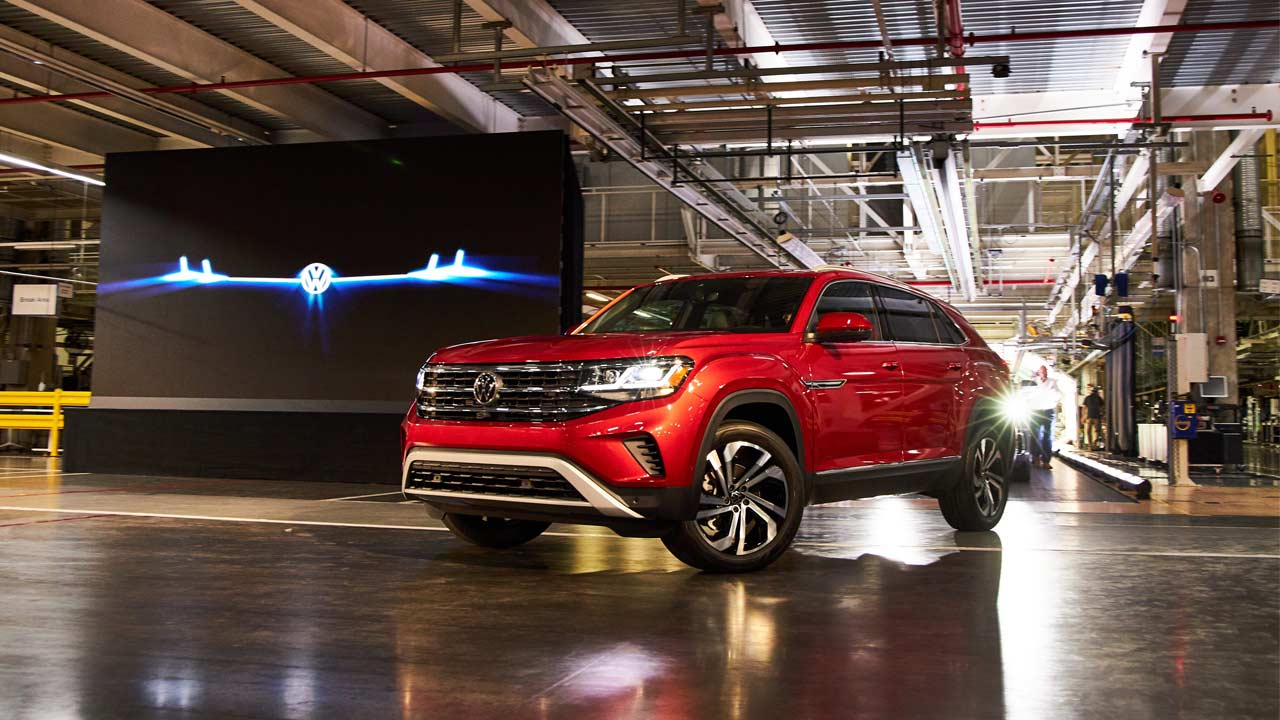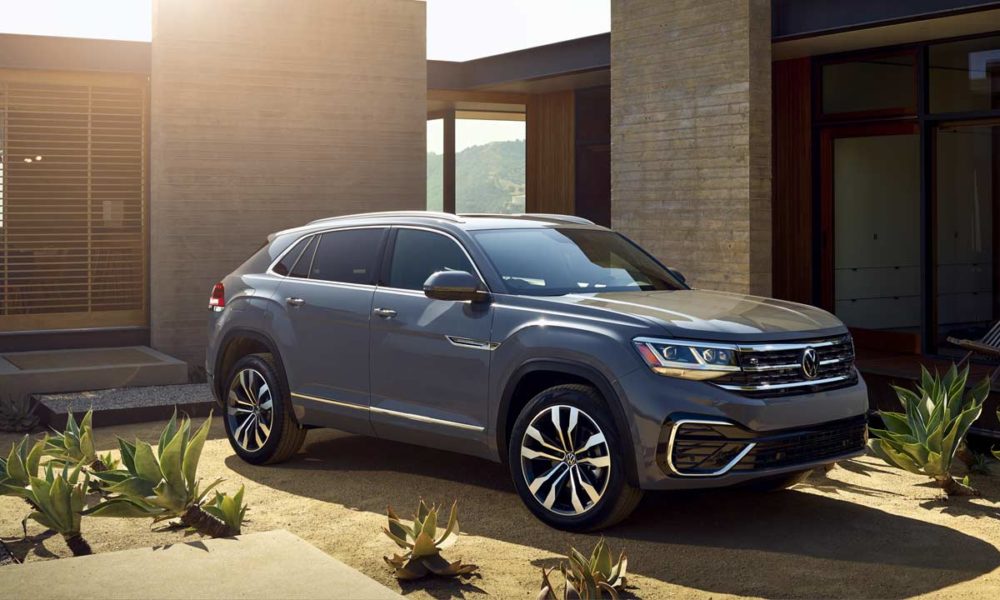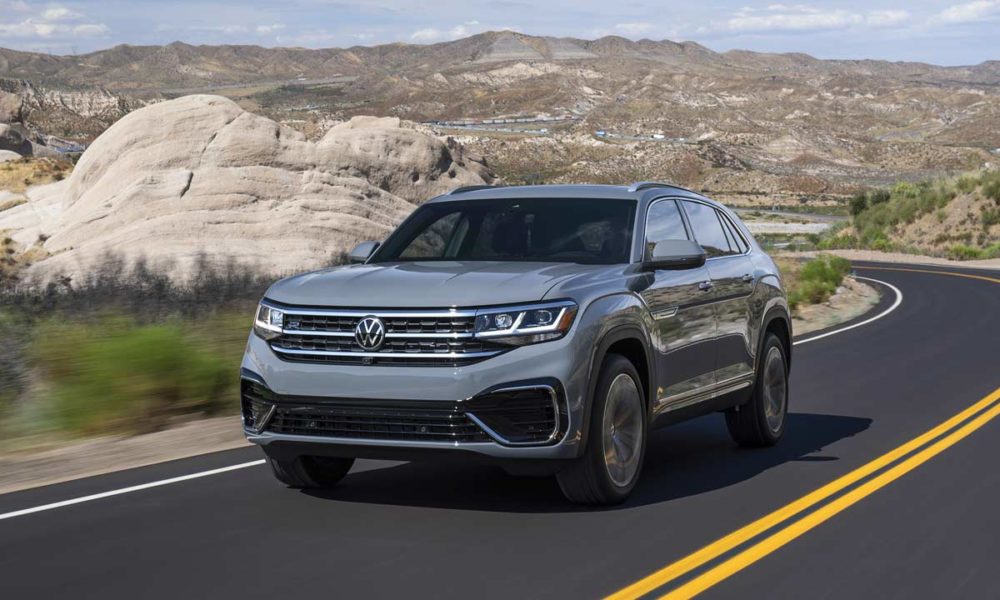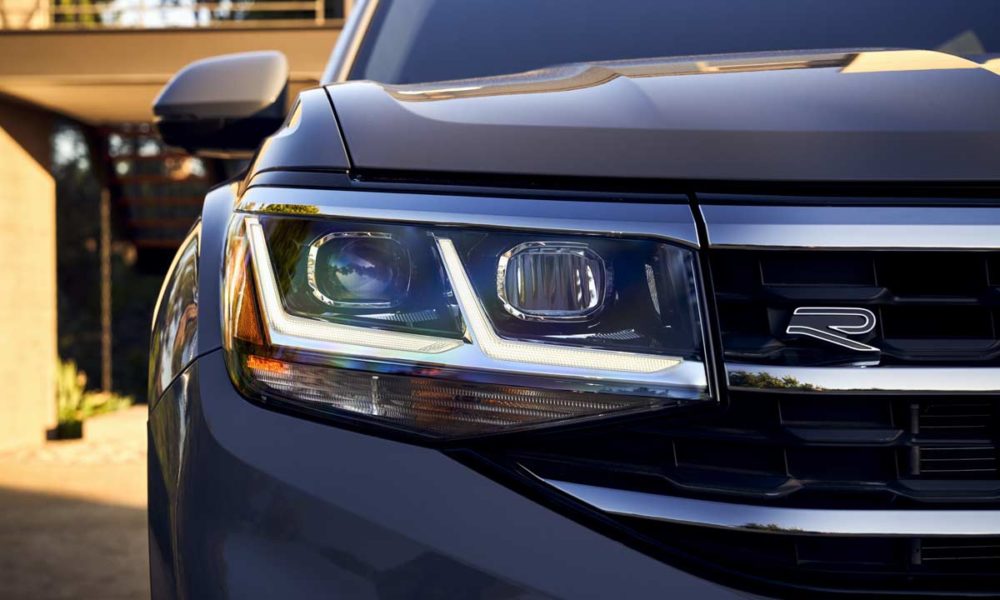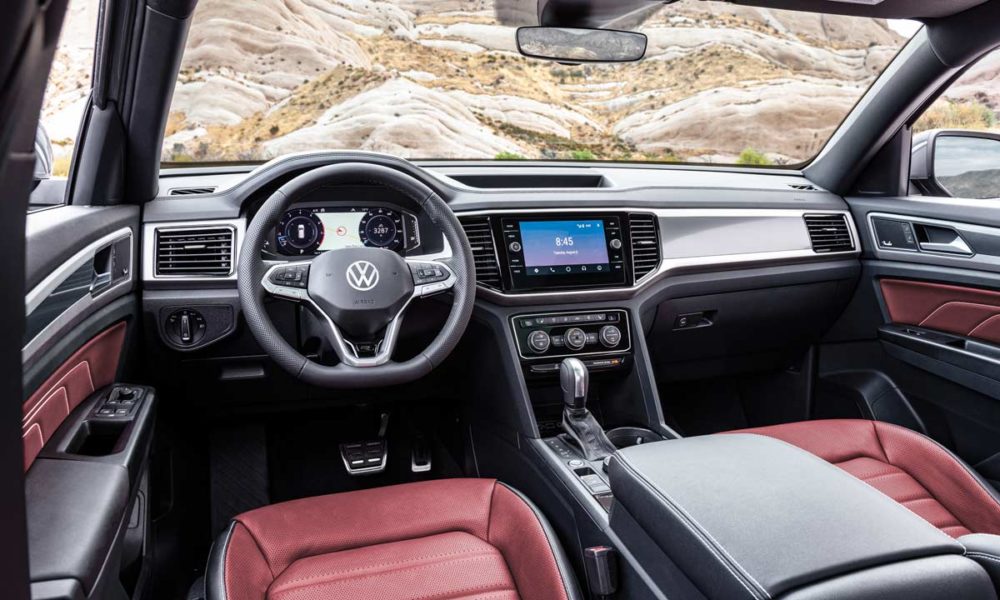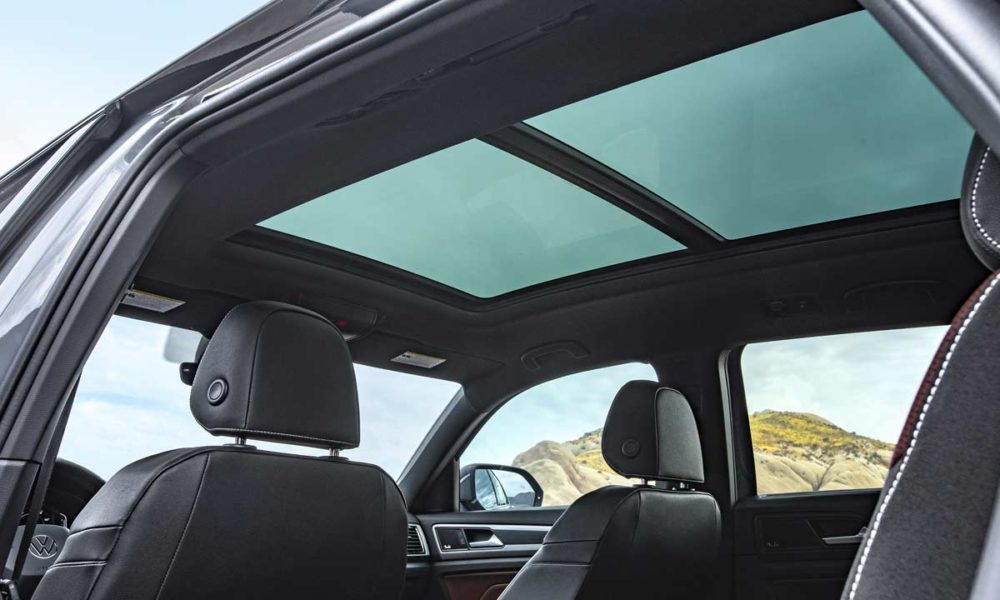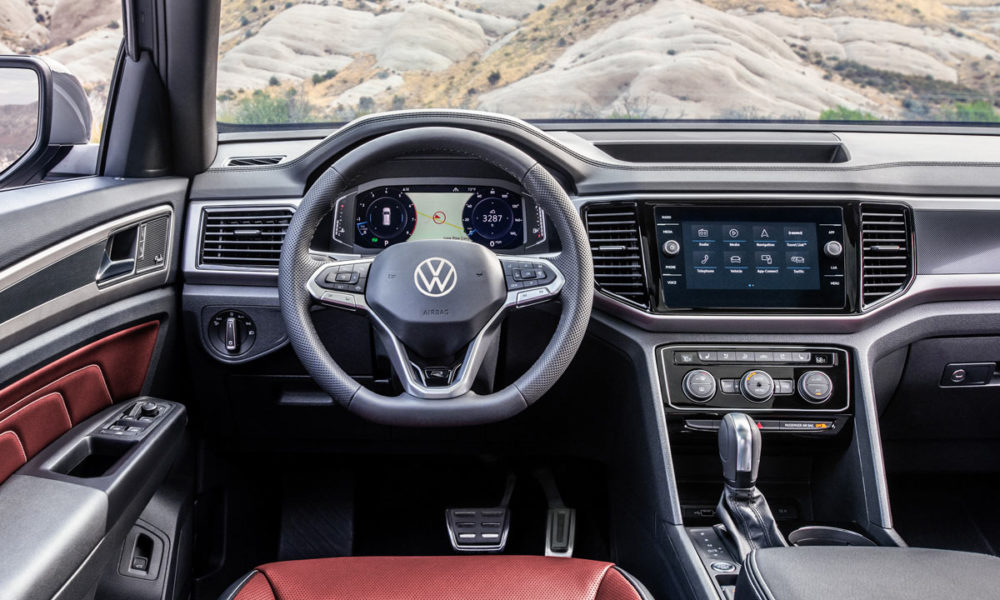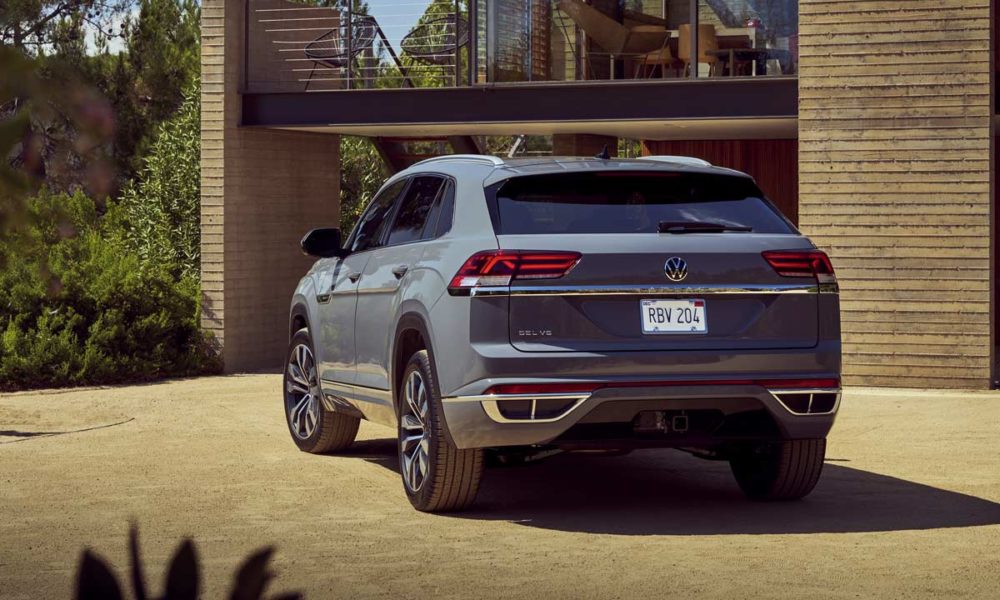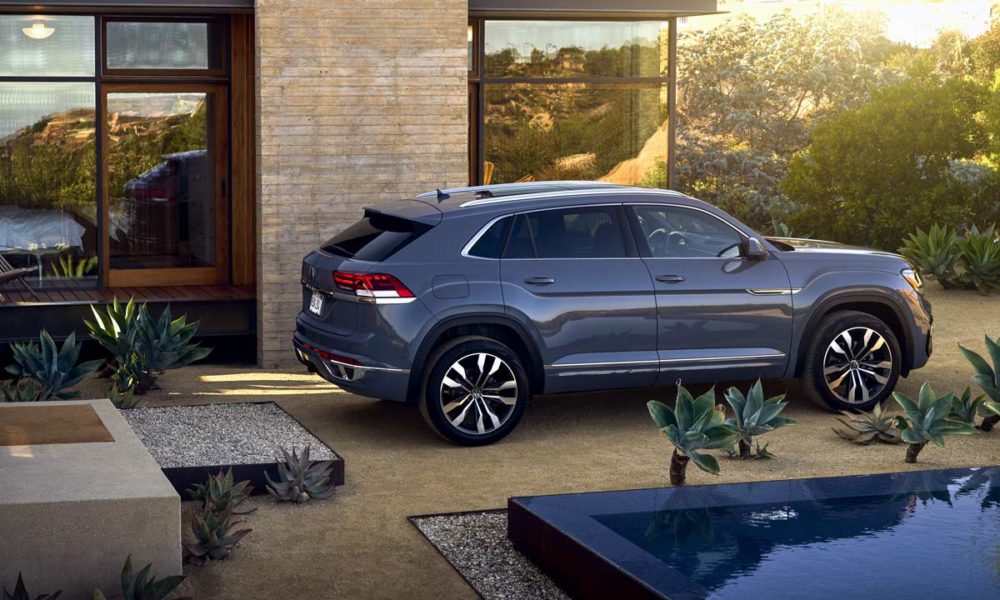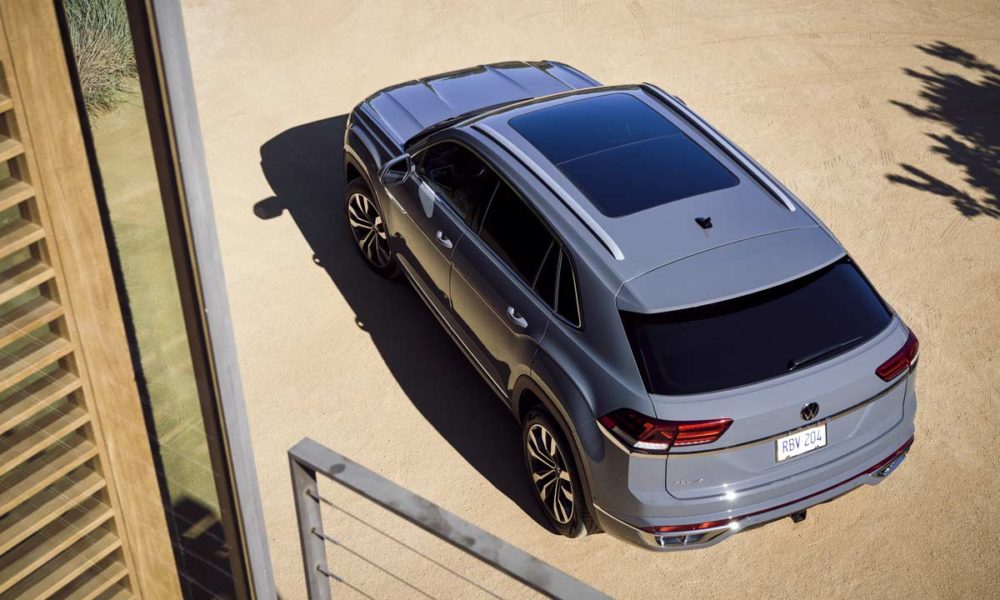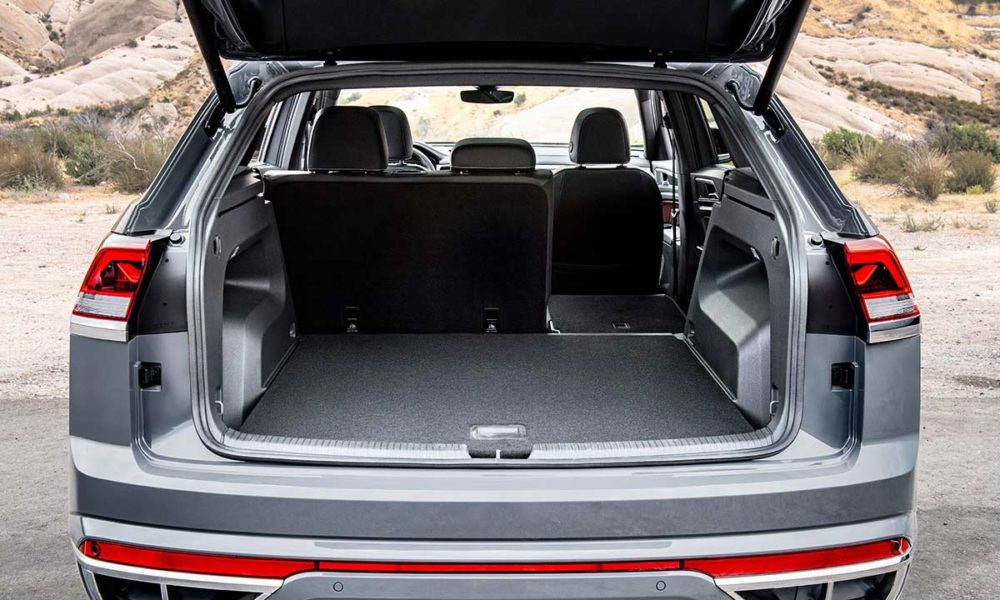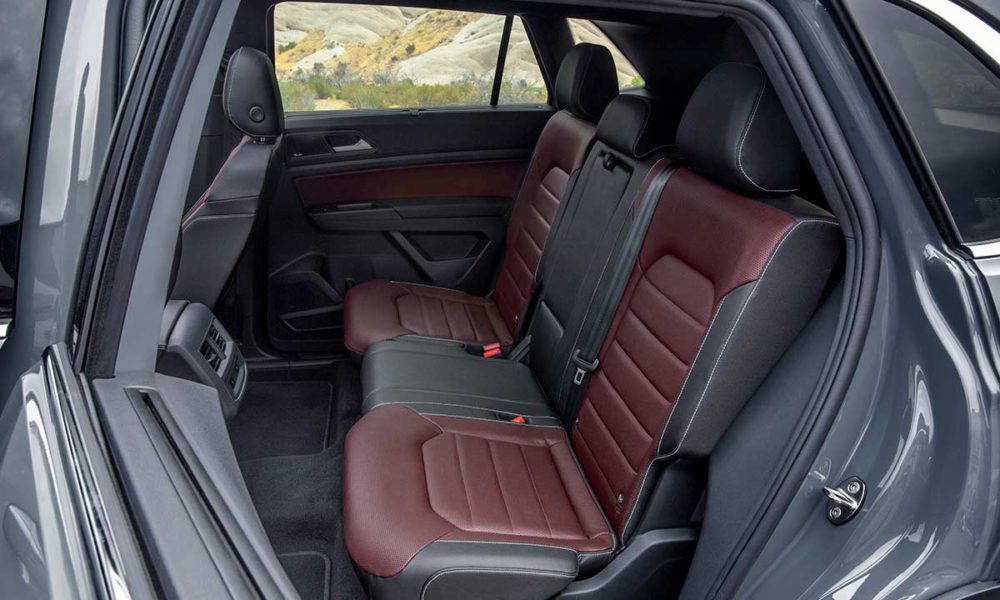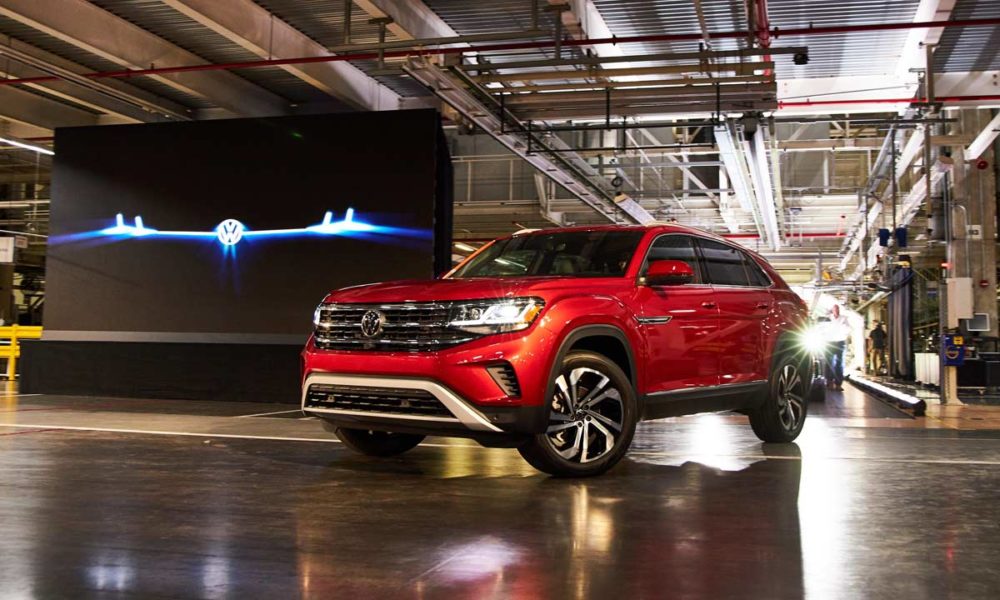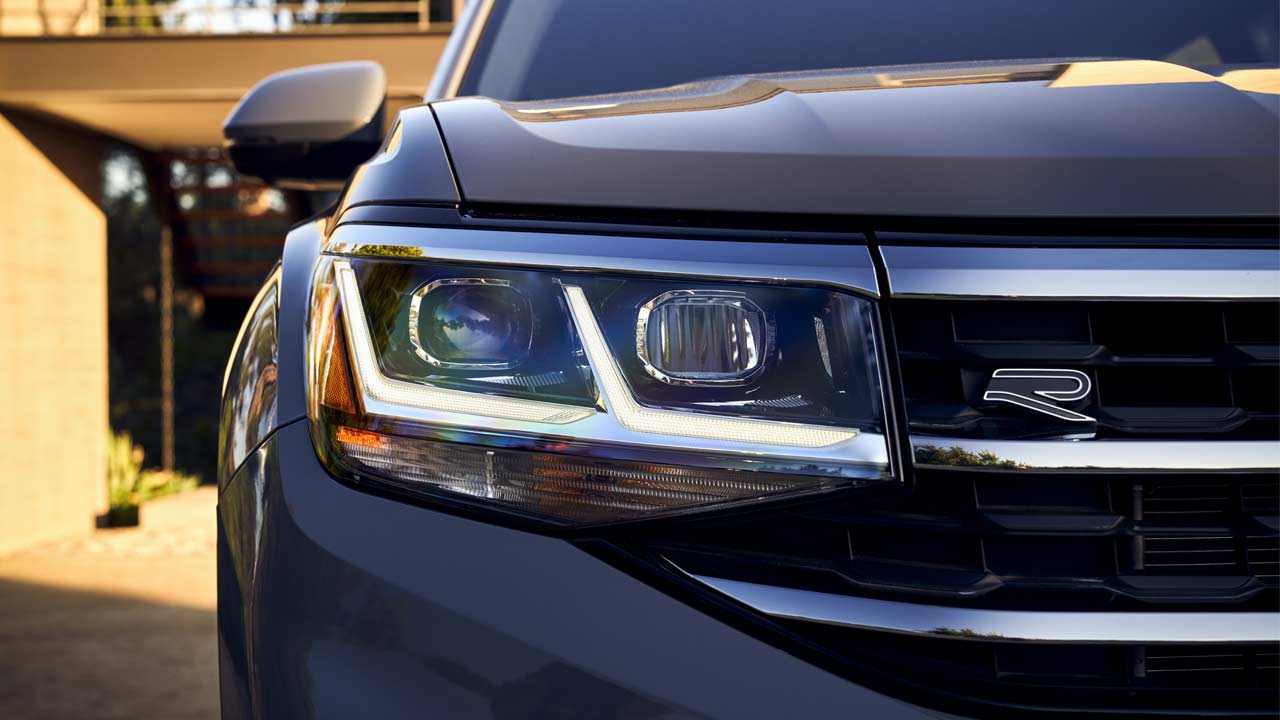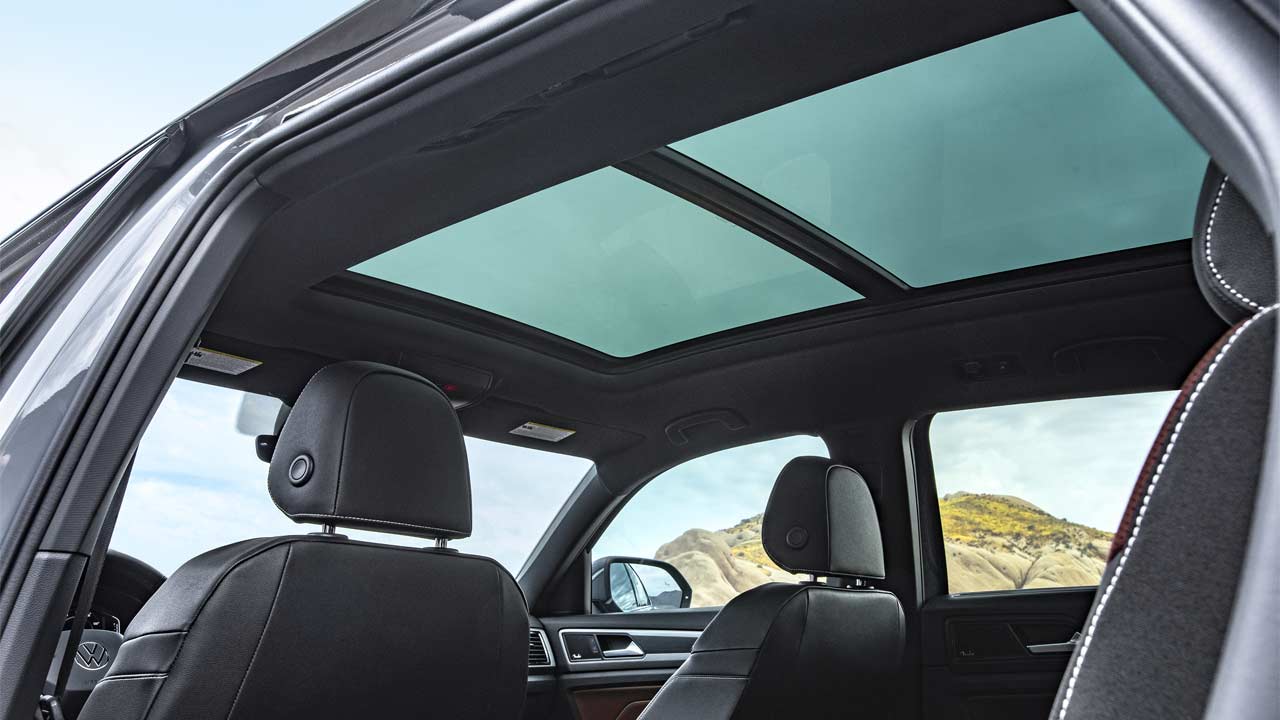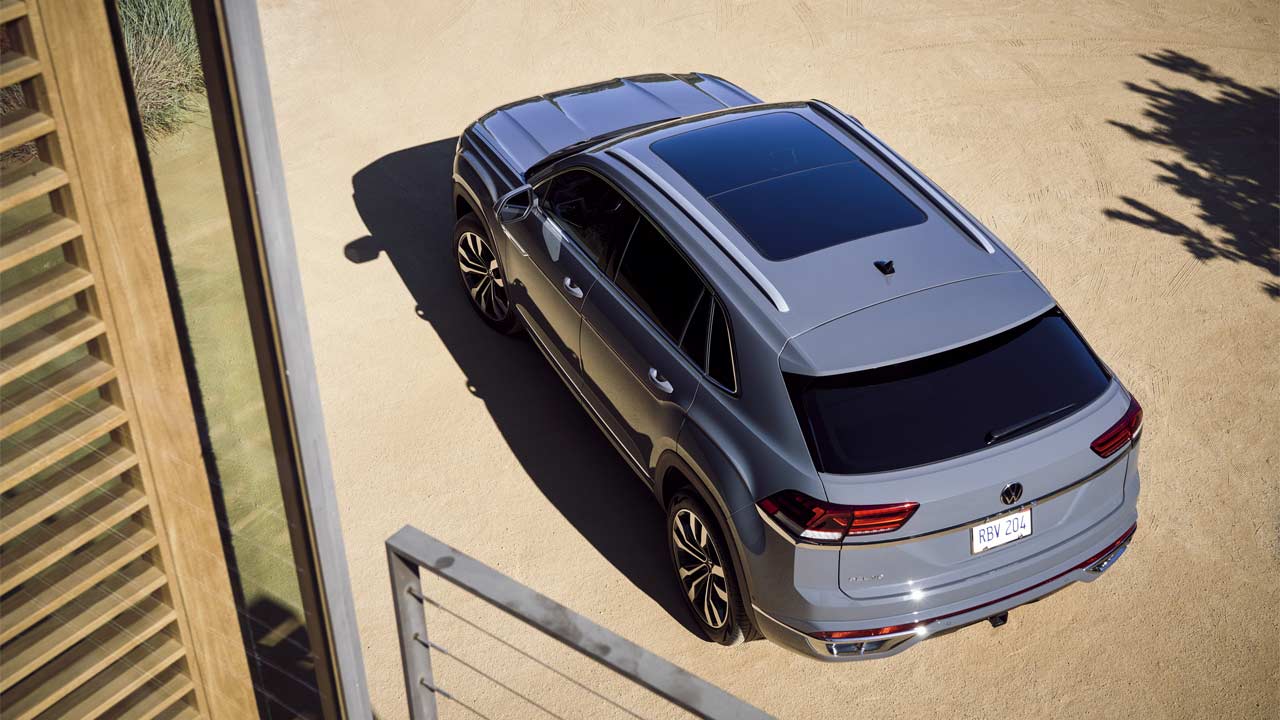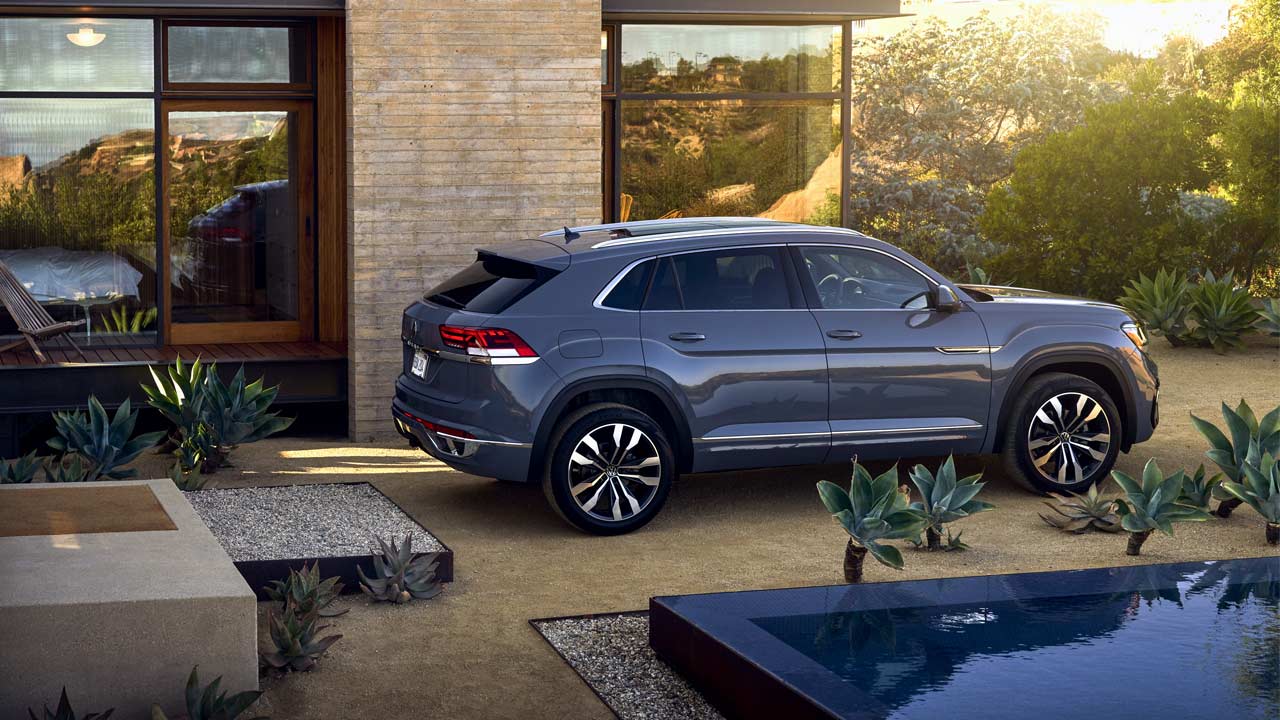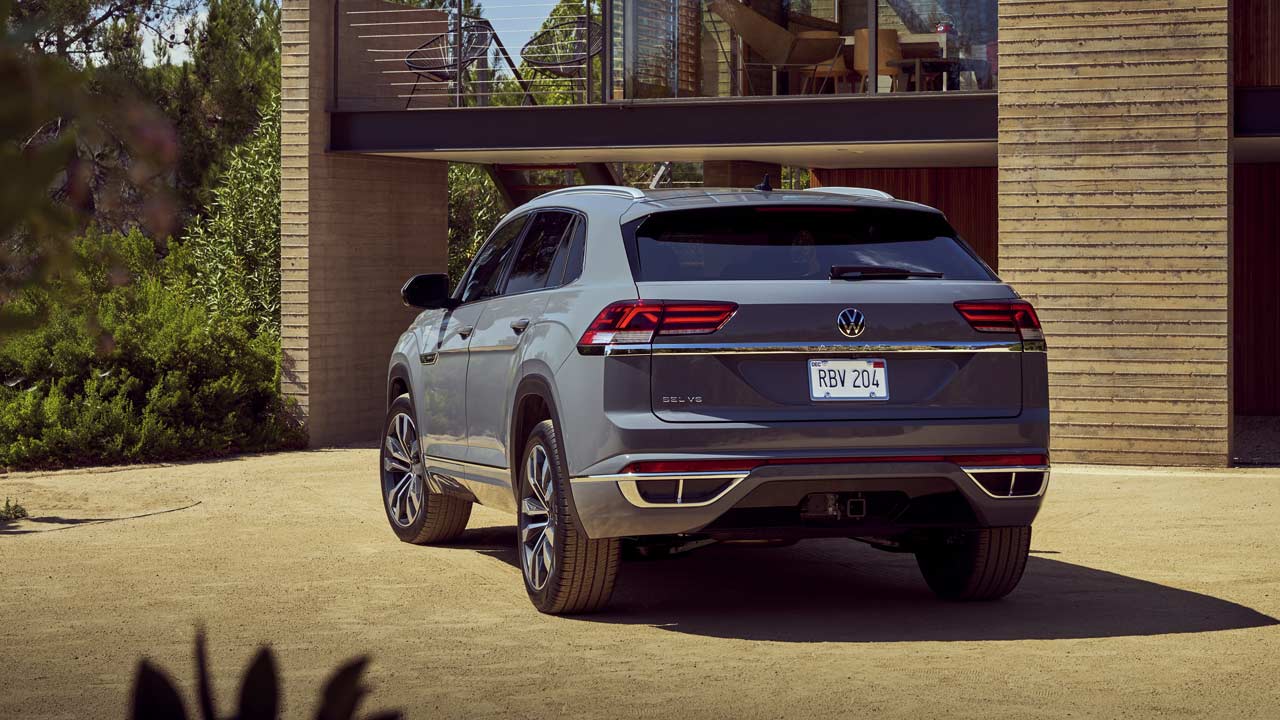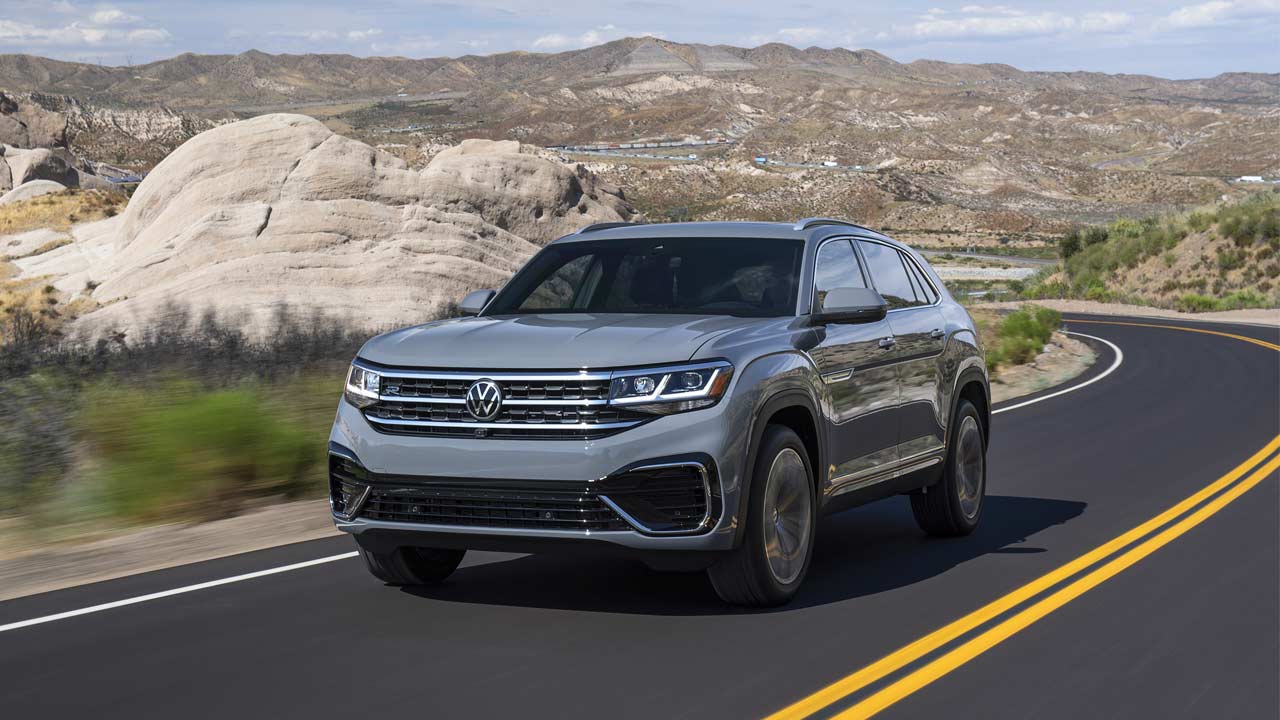As previewed with a concept last year, the Volkswagen Atlas has now got the production version of the Cross Sport, “built in America for Americans”. VW has made an additional $340 million investment for the Atlas Cross Sport at the company’s facility in Chattanooga, TN.
The production model (R-Line) retains the chrome bits of the Cross Sport concept, including the chrome bar at the rear just under the taillamps. The R-Line trims also get piano black applications around the lower front air scoops, and the optional 21-inch aluminum-alloy wheels as well.
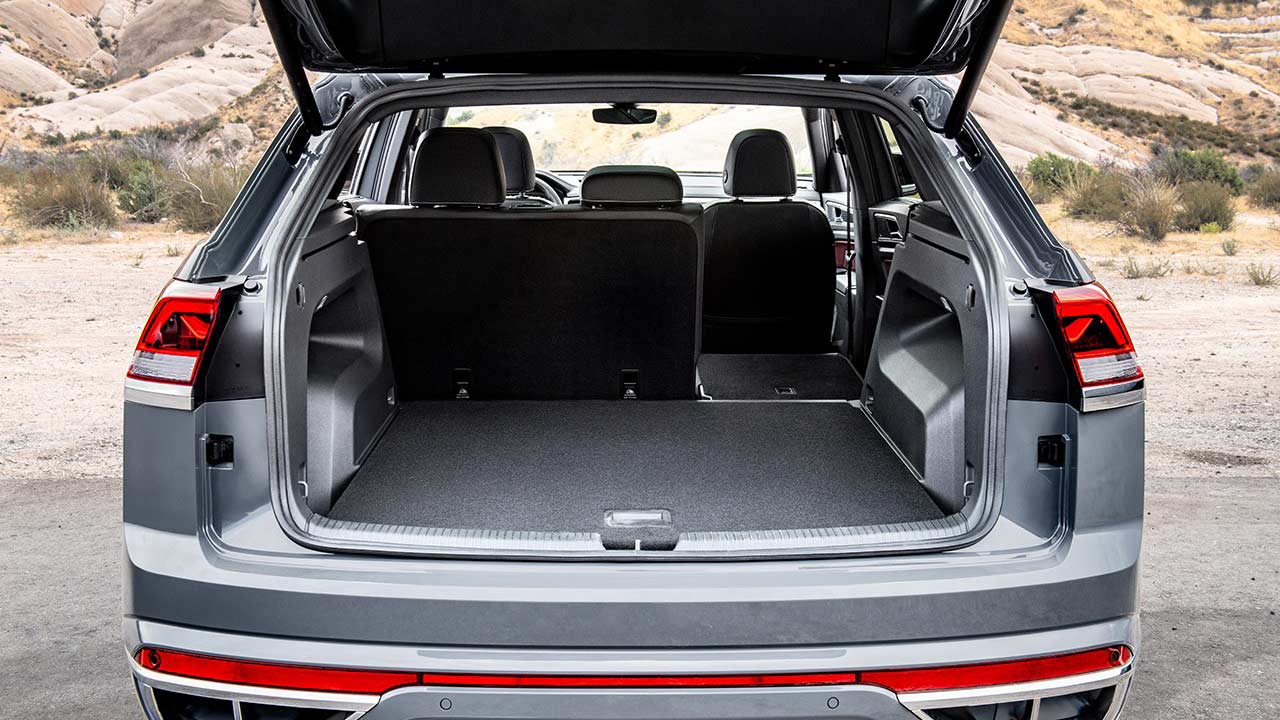
As for the dimensions, the Cross Sport is 2.8-inches shorter and 2.3-inches lower than the full-size Atlas. It is 78.3-inches wide and rides on the same 117.3-inch wheelbase, which should result in a generous interior space despite a sloping roofline. As for the luggage space, VW claims 40.3 cu ft (1,141 litres) behind the second-row seats and 77.8 cu ft (2,203 litres) with the second row folded.
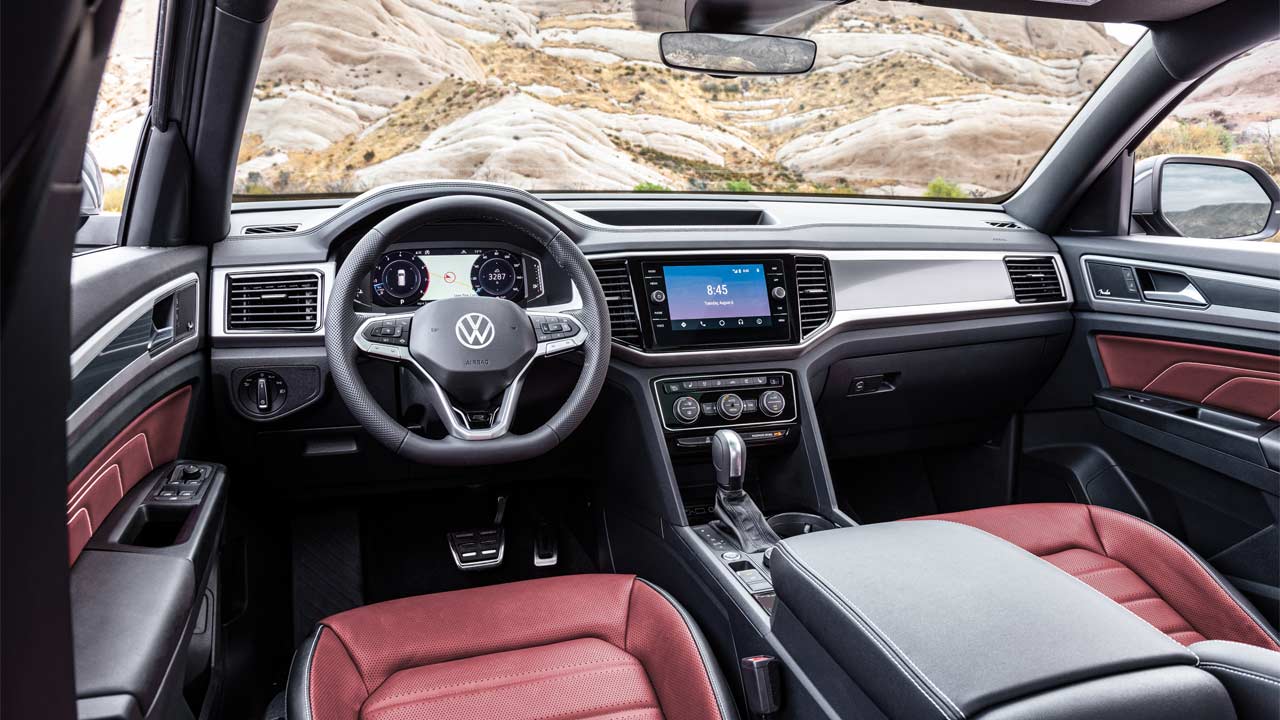
The interior layout or the dashboard is the same compared to the regular Atlas, however, there’s a new flat-bottom steering wheel, contrasting leather upholstery, door inserts, and sporty pedals to spice things up. Options include a 10-inch digital cockpit, heated steering wheel, a panoramic sunroof that’s almost 5 feet long, wireless smartphone charging, ventilated front seats, and 12-speaker Fender Premium Audio System.
“Building off the success of the Atlas 7-seater midsize SUV, we see an opportunity for a 5-seater model that offers even more style and almost as much interior space,” said Scott Keogh, CEO, Volkswagen Group of America. VW claims the Atlas Cross Sport to offer 111.8 cu ft (3,166 litres) of passenger space.
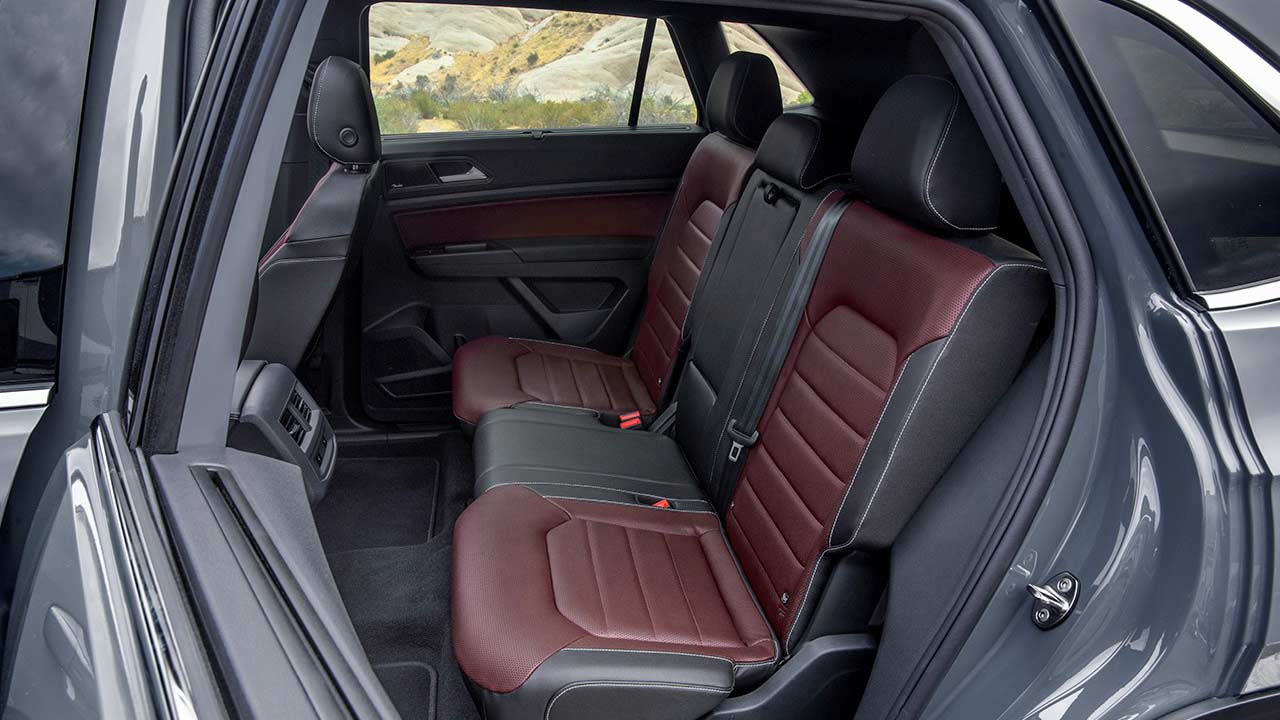 Generous legroom..
Generous legroom..
More options include rear sunshades and heated rear seats. VW claims the Atlas Cross Sport to offer 40.4 inches of rear-seat legroom.
The Volkswagen Car-Net suite of connected features is upgraded for MY 20, with an updated mobile app. Features of that connected car technology include remote start and stop (if equipped), remote door lock and unlock, remote honk and flash of lights, last parked location, and remote vehicle status display, which provides information on fuel level, mileage, and door and window status.
Car-Net Hotspot enables the passengers to access the internet with up to 4 connected devices simultaneously, including tablets, smartphones, laptops, gaming devices, all at 4G LTE-enabled speed.
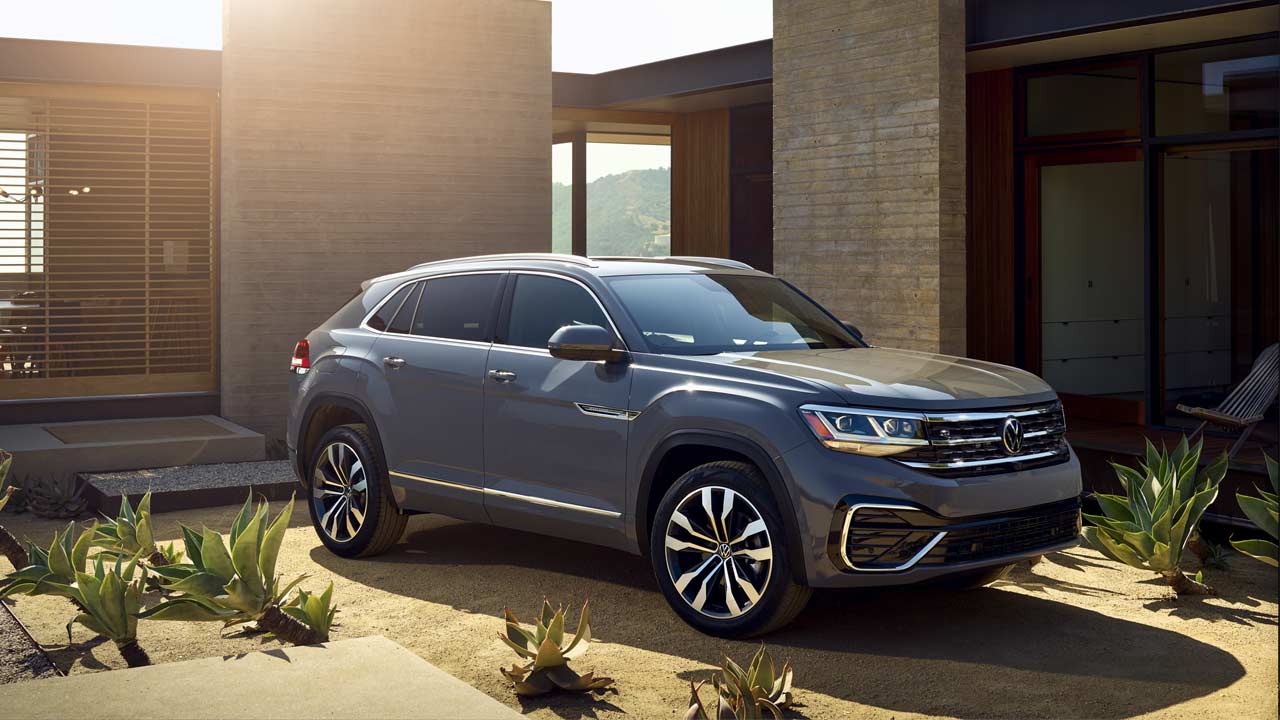
As for the advanced driver-assistance and safety features, the base S model has standard Forward Collision Warning with Autonomous Braking (Front Assist), Blind Spot Monitoring, and Rear Traffic Alert. Further up the trim walk, features such as Adaptive Cruise Control with a Stop and Go feature and Park Distance Control become standard.
Options include Traffic Jam Assist (TJA) which uses the front camera and front radar sensor to help maintain the following distance from the car in front, and Dynamic Road Sign Display available for Atlas Cross Sport models with a factory-installed navigation system.
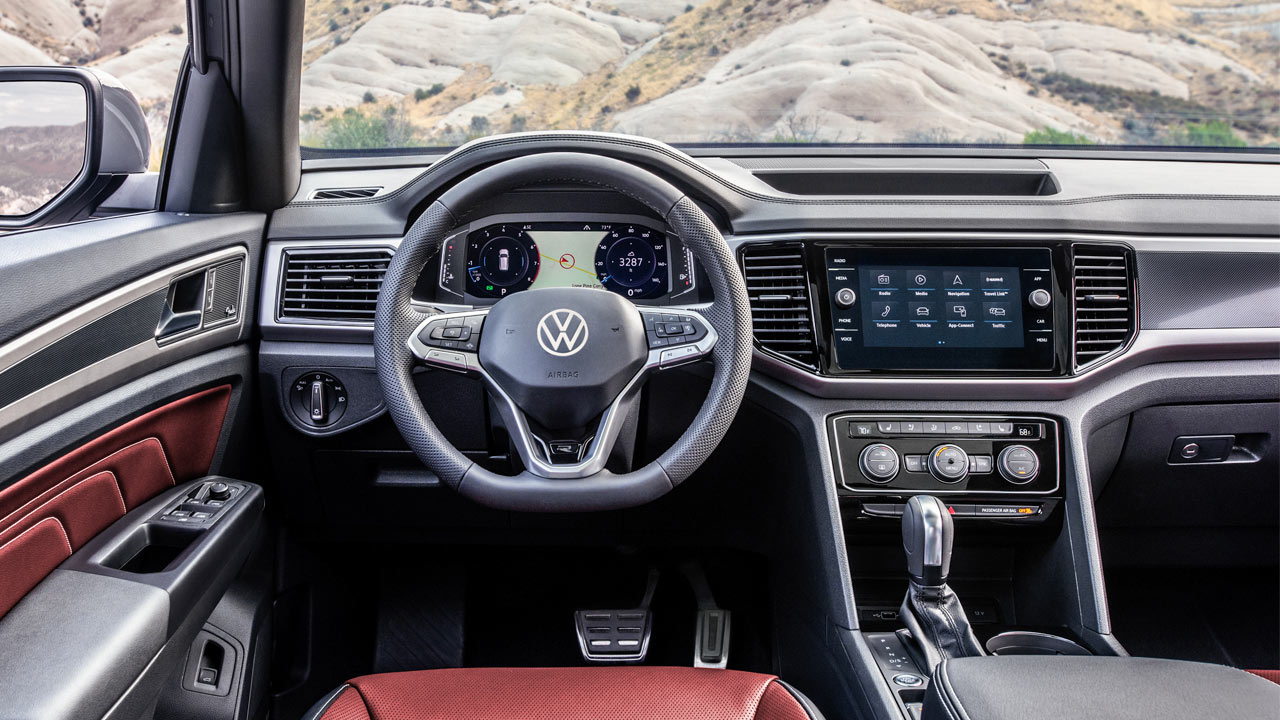
Moving on to the business end of the story, the Atlas Cross Sport will be available with two powertrains: a 3.6L V6 with 276 hp and 266 lb-ft (361 Nm) of torque, and a 2.0L 4-cylinder TSI (turbocharged) engine producing 235 hp and 258 lb-ft (350 Nm) of torque. Both engines are mated to an 8-speed automatic transmission and are available with 4Motion AWD system. The V6 is claimed to tow up to 5,000 lbs (2,268 kg) with ease when equipped with the V6 Towing package.
There will be 8 trim levels: S, SE, SE w/Tech, SE w/Tech R-Line, SEL, SEL R-Line, SEL Premium, and SEL Premium R-Line. More details and pricing will be announced ahead of the launch in the Spring of 2020.

Leave a Reply
Note: Comments that are unrelated to the post above get automatically filtered into the trash bin.
